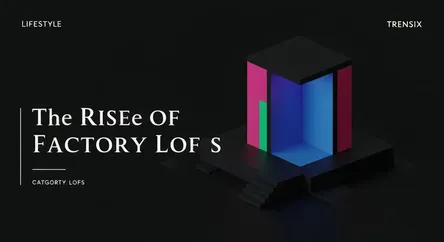Lifestyle
The Rise of Factory Lofts

Discover the trend of converting old factories into stylish loft apartments. Learn why this industrial-chic living and adaptive reuse is on the rise.
What is it?
A factory conversion, also known as adaptive reuse, is the process of repurposing a former industrial building into a residential, commercial, or mixed-use space. These projects transform old manufacturing plants and warehouses into unique properties, most notably loft apartments. Key architectural features are often preserved, such as high ceilings, large open-plan layouts, exposed brickwork, and oversized windows. This blend of historic industrial character with modern design creates a distinctive living or working environment that stands out from conventional new builds.
Why is it trending?
Factory conversions are trending due to a growing appreciation for industrial-chic aesthetics and sustainable development. Reusing existing structures reduces waste and preserves architectural heritage. These properties appeal to buyers seeking unique spaces with character and history, a stark contrast to cookie-cutter developments. The large, flexible floor plans are also ideal for modern lifestyles, allowing for open-concept living and home offices. Furthermore, these conversions often spearhead the revitalization of former industrial districts, turning them into vibrant, desirable urban neighborhoods.
How does it affect people?
This trend directly impacts urban living by creating new housing stock in often centrally located, post-industrial areas. For residents, it offers a unique lifestyle characterized by spacious, light-filled interiors and a connection to local history. However, the popularity of these conversions can drive up property values in the surrounding area, a process known as gentrification. While this can bring new investment and amenities, it can also lead to increased living costs, potentially displacing long-term residents and small businesses from the community.